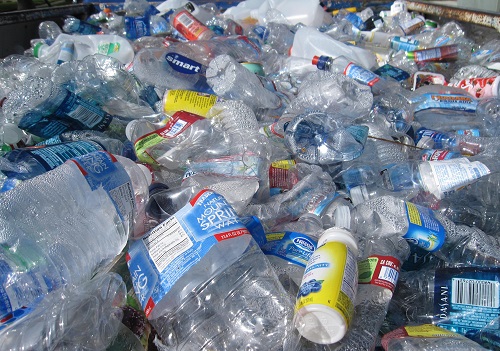One of my biggest pet peeves is plastic waste. Every Wednesday I place my blue bin filled with recyclable plastics on the side of the curb, but I have no idea what happens after they are collected. It is a mystery. I suspect much of it goes into a landfill, which is depressing. What is the point of separating and collecting plastic packaging if it just ends up in the same place as other waste? Some call it “wish-cycling” i.e., wishful thinking about recycling that relieves a sense of guilt, but ultimately achieves nothing.
Putting the onus on the producer
That is why I am encouraged by what is happening in India. It recently passed new Extended Producer Responsibility (“EPR”) regulations that put the onus of plastic waste collection and recycling back onto the companies that sell the products to consumers. As the second largest country in the world by population, India produces about 3.5 million tons of plastic waste per year. While some 60 percent of the waste is currently collected through informal channels and “recycled,” the majority of that plastic is actually either “downcycled” into materials that cannot be further reused and recycled or transformed into a furnace oil via pyrolysis (high temperature heating), a non-environmentally friendly process. Neither of these solutions offer truly sustainable forms of recycling in the circular economy sense. The new EPR regulations are changing that.
Using a phased-in approach, producers, importers and brand owners of plastic packaging in India will be required to meet minimum targets for collecting and recycling their plastic waste starting in April 2024. The requirement starts at 50 percent for so-called “category I” plastics (think clear PET plastic bottles and other rigid colored plastic containers) and gradually scales up to 80 percent by 2027. Moreover, starting in April 2025, the same companies will be required to demonstrate that at least 30 percent of this same category of plastic packaging is manufactured using post-consumer recycled (“PCR”) content.
In other words, brand owners will no longer be allowed to downcycle their plastic waste or use only virgin plastic in their packaging. They must show that it is made from, in part, recycled plastic. These PCR requirements gradually scale up to 60 percent by 2028. Any companies that fail to meet these targets will have to pay “environmental compensation” penalties that will be used to offset the costs of collecting their waste.
Finding a partner to help meet new rules
As a result, fast-moving consumer goods companies or “FMCGs” like Reckitt Benckiser and Unilever are actively looking to partner with local solution providers that will enable them to meet these new requirements. EPR has created a business opportunity for many Indian plastic waste processing companies that are now heavily investing in new production facilities and technologies to meet this future demand for high quality recycled plastic granules that can be seamlessly integrated with virgin plastic. This is no small feat.
Food grade plastic must meet safety standards for human contact to be used to meet PCR content requirements. This requires grinding the plastic waste into flakes and washing them to make sure all contaminants and impurities are removed before extruding them into plastic granules. For quality control purposes, FMCGs also require end-to-end traceability in the waste recycling supply chains, which means plastic waste processors must have technology for mapping and documenting the procurement of their plastic waste feedstock.
Shifting incentives
While these new processing facilities and technologies are expensive, the EPR guidelines have created the enabling environment to de-risk the necessary investments. Whereas some plastic waste processors in India are already successfully catering to a down-cycle market for recycled PET plastic, which can be turned for example into polyester fiber, the new regulations create a huge market opportunity for these players to shift to higher-end food-grade and human contact safe recycled plastics. Climate finance experts in India like Simmi Sareen of Unitus Capital agree that the regulatory framework is shifting incentives. “The EPR regulations will make it more profitable to upcycle plastic waste into premium granules thereby enabling brand owners to meet their PCR content requirements,” says Simmi.
Sustainability-focused transactions could be lucrative
Many consumer goods brands like Coca Cola have already made public pledges to use PCR content in their packaging to make their brands more environmentally friendly, but the Indian EPR regulations now make it mandatory. This has created demand that is already translating into off-take agreements between consumer goods companies and local plastic waste processors even before the new recycling facilities have come on-line, further de-risking the market opportunity. These transactions could be potentially quite lucrative. A 2020 study published by Accenture and the Federated Indian Chambers of Commerce and Industry suggests the value that can be extracted from more sustainable plastic packaging processes could be worth $100 billion over ten years.
Another interesting feature of the EPR regulations is the ability for brand owners that exceed their recycling targets to sell any surplus credits to other brand owners that fall short. The rules of this EPR credit scheme have yet to be worked out, but it would potentially create a trading scheme, similar to carbon credits, that could be monetized. Other categories of plastic, such as flexible single layer and multilayer plastics are also included in the EPR scheme but have less ambitious targets for recycling and PCR packaging content as these categories of plastics are more difficult to recycle.
Above and beyond the EPR regulations, India also implemented a ban on single-use plastics this year, such as straws, utensils, and thin plastic bags. While the implementation across India has been uneven, it has created a noticeable shift to the use of biodegradable alternatives in the restaurant and hospitality sectors.
Will other countries follow India’s lead?
So, if a developing country like India can implement EPR regulations, why can’t a developed country like the United States? I suspect that widely held stereotypes about government regulations being bad for business (because they create compliance costs that get passed on to consumers) is one source of resistance. Lobbying by consumer goods groups or plastic producers who would prefer to maintain the status quo might be another reason.
In reality, the Indian EPR regulations are stimulating investments in new technologies and creating new market opportunities and jobs in furtherance of a circular economy. EPR is turning plastic waste into a feedstock for the production of a valuable commodity. It is a win-win for consumer brands and consumers alike and benefits the environment by reducing a plastic waste problem that will only get worse over time with inaction.
Regulation is not always “bad” for business. As India is demonstrating, it can be a powerful force that guides the invisible hand to correct a negative externality, leading to innovation, investment, new market opportunities, job creation and a cleaner, more sustainable economy.
*Originally published in the Impact Money Blog, republished with permission
Anthony Randazzo is the Director, Social Enterprise Finance at the Development Finance Corporation (“DFC”) and author of the Impact Money Blog, a source of news and information about impact investing and social entrepreneurship.



Hi Anthony!
I see you mention a requirement to use 30% post-consumer recycled content by 2025. When fine-combing the 2022 amendment to the PWM regulation I couldn’t find any reference to pre- and post-consumer (which is a big omission). Do you know of any other references where this is clarified or have I just missed it?
Thanks//Piers
Thanks for your comment. You may have an easier/quicker time reaching Anthony via his blog (link in his bio at the bottom of the piece).